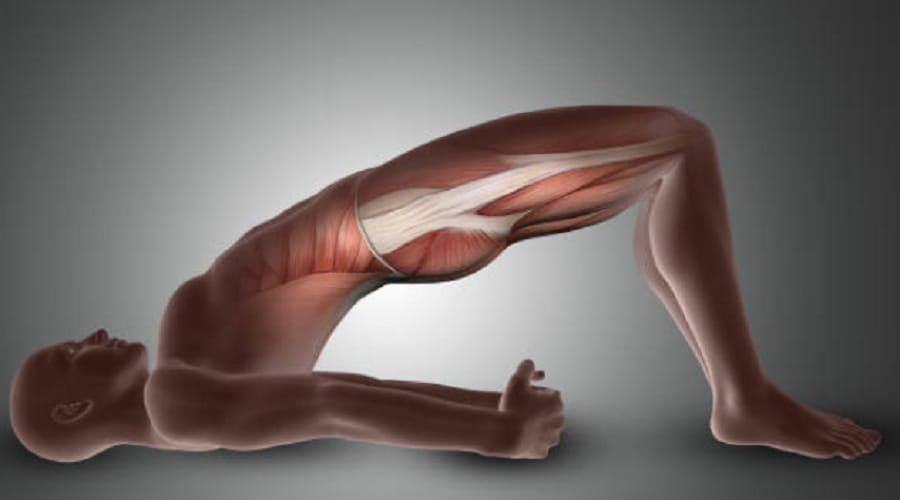
by admin | Jan 9, 2022 | Mind
The Two Mindsets: Competition VS Co-Operation Part 2
Traits Of Competitive People & Why You Should Rather Rely On Compassion
People are always thinking about competition. Whether it’s at their workplace or in their personal lives, people always want to be the winner.
This competitive mindset is present not just in the world of sports but beyond it, as well.
Though effective in some regards, this mindset has its drawbacks that can lead to suboptimal results both personally and professionally.
Instead of constantly seeking ways to beat others, we should learn how to cooperate with our peers for a greater chance of success than if we were trying alone.
Nevertheless, in some instances, the competitive mindset has its applications and may, in some cases, bring out the best in you!
And so, are you ready to learn more about the mind? Then, let’s jump straight into it!
Traits Of A Winner

As we just mentioned, many people (especially in corporate environments) are highly competitive individuals looking to be the shark in the small tank of fish.
From the moment they wake up to the moment they sleep, they’re constantly thinking about how to beat everyone else that is around them.
Following this train of thought, we can conclude that the main traits of people that have adopted the competitive mindset are:
As we just mentioned, competitive people are focused mainly on the win, and nothing else matters for them, really!
This implies that such individuals are highly egocentric, meaning that they focus primarily on the self.
Perhaps one of the most positive things about being highly competitive is the determination to achieve set goals.
Competitive people are not deterred by obstacles and will often go above and beyond to make sure they come out on top.
As mentioned, this determination can be seen as a positive trait, as it can help them achieve great things in a personal aspect.

High levels of determination imply high energy levels because, well, a winner has to do whatever it takes to come out on top!
This restlessness and borderline hyperactivity are perhaps among the most obvious traits that can tell you a person is more inclined towards the competitive mindset rather than the cooperative one.
Being Competitive – The Side Effects
Okay, as we learned, some people have a naturally competitive nature.
They thrive in the face of competition and love to see their opponents fall.
But they may not realize that this mindset is actually a detriment to success because it can lead them to do less than ethical things to win.
Even more so, this type of person also has trouble understanding why others reject what they want at all times and will often be very dismissive or even aggressive if someone does not agree with them.
In short, competitiveness can create enemies out of friends and discourage friendships from forming in the first place.
It also makes you more likely to become an egotistical bully who tries too hard for validation and does not know when enough is actually enough.
Integrating The Competitive Side
As we mentioned already, the competitive mindset isn’t to be excluded completely.
Instead, one must learn how and when to utilize the competitive mindset and when to properly use the cooperative one.
What this means is that the competitive mindset too can be useful in certain instances.
When competing in a race, for example, a competitive mindset can be beneficial.
It can help you focus on your goal and push yourself to achieve it, with high levels of energy and determination.
This is just one example of a situation where the competitive mindset can be helpful.
However, outside of actual competitions where a winner is announced and you have opponents, well, the competitive mindset isn’t really useful.
Because most of our life depends on inevitable communication with other human beings, it is best to go beyond the ego, wants, and needs and focus on compassion & cooperation.
Compassion & Cooperation

Unlike the competitive one, the cooperative mindset is beneficial in many different regards.
When we approach life with a cooperative mindset, we are able to see the world through a more compassionate lens.
We are also better able to connect with others, forming meaningful and lasting relationships.
Additionally, the cooperative mindset allows us to be more effective and productive employees, team members, and leaders.
We are better able to work together towards common goals, and we are more likely to achieve them.
Following that train of thought, we can conclude that the main traits of cooperative people are:
- Compassion
- Generosity
- Borderline selflessness
- Tolerant
- Helpful
- Empathy
And in most cases, that is better than egoism, intolerance, callousness, unhelpfulness, and vengefulness.
Final Thoughts
All in all, it is not always about winning and achieving your desired, ego-related goals (i.e. coming out on top above everyone else).
The cooperative mindset leads to a more harmonious and peaceful world, while the competitive one is more likely to create boundaries between humans.
For this exact reason, we should remember that life isn’t a death-match, free-for-all game, really.
Think of life as a co-op game, seek out YOUR best team and see what you, together, can do towards a common goal!
Be compassionate. Be cooperative. Spread love and care.

by admin | Jan 9, 2022 | Mind
The Two Mindsets – Competition VS Cooperation
Which Mindset Can Get You Further In The Game Of Life?
Mindset, mindset… And mindset again! Oh, the wonders it does.
Would you describe yours as a competitive or cooperative mindset?
Well, in case you are anything like me, the answer varies.
For example, in school, I was always very competitive with my grades, and to this day, I still am.
But when it comes to friendships and other types of relationships (hint: especially business ones), I believe that it’s crucial for us all to cooperate so we can be of mutual benefit.
The two mindsets may seem different, and as if you are bound to just one, but truth be told, they both serve a purpose, and the key is knowing which one is needed at certain points in our lives!
Sometimes we need to be more competitive because it brings out our best qualities and pushes us to succeed, whereas other times, we need cooperation because of relationships we have with others who will help us get where we want.
In this article, we’ll discuss both mindsets and their main characteristics, and in the second part of the series, we’ll tap into the more practical question – Which one should you abide by?
And so, are you ready? Let’s read!
Survival Of The Fittest

In 1859, Charles Darwin published “On the Origin of Species,” which was a great advancement to the idea of the “survival of the fittest.”
He was one of the first people to continue developing this theory that had been previously proposed and, in this case, extended by none other but Mr. Darwin himself.
The ways in which Charles Darwin’s views on evolution have contributed to how it is currently understood can be seen in many areas, but there was one main, more important point that his theory made.
The point is that nature is all about competition – It’s either I eat you, or you eat me.
According to the theory of evolution, survival is based on how fit you are for the environment you live in.
If you’re not fit enough, you’ll get consumed by the fitter, stronger species in your environment.
And well, looking at nature, that does make sense in some ways.
Perhaps, this theory is what instilled in people the belief that life nowadays, too, is a game of “survival of the fittest” – This is what gave rise to the so-called competitive mindset.
What Exactly Is The Competitive Mindset?

The competition mindset is all about winning.
It doesn’t matter if you win by stealing, cheating, or just being better than the other person.
The point is that you win, and that’s it!
There are no second-place winners in this game of survival of the fittest.
This type of thinking has been around for a long time because it makes sense for people to want to be on top and stay there.
After all, we’re living in a society where success equals power.
But while striving to be number one may work sometimes, it can also lead people down a dark road which will only end up hurting them in the end.
Hint: If you eat everyone on your way to the top, you’d have no one to celebrate with?
So what should we do, is the question here?
Well, let’s take a look at cooperation…
The Cooperative Mindset

The cooperative mindset is about working together to accomplish a common goal.
This type of thinking has been around for many centuries, and it’s not just limited to humans – Animals also engage in cooperation.
In fact, different types of cooperation can very well be observed, even in nature where it’s considered that everything is competition-based!
But what does this have to do with success, one may ask?
Well, it’s pretty simple – Having a cooperative mindset means that you’re willing to work with other people and put aside your personal goals for a while for the sake of achieving a collective one.
In other words, if you’re looking for success, then don’t forget that it can’t live outside of healthy relationships!
After all, there’s no real meaning behind the word “success” if it’s being used without a single reference to helping other people reach their goals as well.
Yes, many people consider themselves a “one-man army,” but in reality, you are never really alone.
If you feel like you’ve achieved something entirely by yourself, odds are you fail to realize and give credit to the side contributors to your success. (even if they’re passive)
Read Next…
If this article sounds interesting to you thus far, wait! We have more for you in line.
Jump over to part 2 of this article series, where we’ll touch on interesting details about this topic, such as the traits of the two mindsets and how to integrate them!
See you in part 2!

by admin | Jan 9, 2022 | Fitness
Best Glute Building Exercises
Think you’re doing all the right things to tone your glutes? You might be surprised.
While squats and lunges are great exercises for the lower body, they may not be providing the stimulus your glutes need to really start firing.
And this is especially valid nowadays, when the majority of the population is sedentary, due to the nature of our modern-day work!
If you’re sitting for hours on end each day to get your work done, the odds are that your glutes have started atrophying.
And that is no good!
Weak glutes mean less lower-body strength and an increased chance of hip, knee, and lower back injuries.
In this post, we’ll outline the best glute-building exercises, so you can make sure you’re getting the most out of your lower body workouts.
So, read on – and get ready to sculpt a backside!
Glute Anatomy
Before we get into any specific exercises for the glutes, it’d be good to understand the anatomy of that muscle group and what functions it has – This is how we can determine the best glute exercises.
Contrary to popular belief, the glutes are not just one big piece of muscle.
The glutes are made of 3 main components:
- Gluteus Maximus
- Gluteus Medius
- Gluteus Minimus
These three muscles work together to realize 3 main functions – Abduction, Extension & Rotation of the hip.
Besides that, the glute muscles help keep us upright, move forward and also aid the stability & balance of the hip!
Fun Fact: The Gluteus Maximus is the BIGGEST muscle in the body! And as such, it needs to be trained properly.
Why Are Glutes Important?
Okay, so far, you learned that the glutes serve a variety of important functions, are the biggest muscle group you have, AND are located right around the center of your body.
Contrary to popular belief, glutes are in fact a part of your core that keeps you stabilized, balanced and helps you generate power through a variety of movement patterns.
This is precisely why glute development is essential!
A set of properly developed glutes will:
- Make you more balanced
- Help during all lower-body movements
- Make you stronger
- Help prevent lower back/knee injuries
- Make you look (regardless of gender)
How To Train Your Glutes

And so, how can you target your glutes and develop them to the best extent possible?
Well, the answer is simple – Choose exercises that target the glutes through all their main functions and overload on those exercises!
Now let us show you our three favorite exercises and then some worthy mentions!
#1 Ah, Yes, Squats!
If there was one single exercise that would be the epitome for lower-body strength, functionality, and development, that would likely be the squat!
Even more so, squatting is one of the most natural movements anyone can do.
During a squat, your quadriceps, glutes, and hamstrings work together to move you up and down.
Additionally, the calves, lower back & abs help keep your body upright and stabilized.
So, hey, if you want well-developed glutes and lower body as a whole, don’t forget your squat movements!
Barbell squats, dumbbell squats, squats, machine squats, front squats, sumo squats, cannonball squats, etc, etc.
#2 Deadlifts

The second essential hip movement is the deadlift – This is a hip-hinge movement that promotes hip flexion/extension.
The best part of this exercise is perhaps the strong glute flex you get after a nice, deep stretch of the hamstrings.
Generally speaking, most types of deadlifts target the glutes, but if you want to emphasize them, try deadlift movements where your legs are only slightly bent at the knees.
The best one for this purpose is, without a doubt, the Romanian deadlift.
Make sure to initiate the movement up with your glutes and flex them hard up top!
#3 Hip Thrusts

Last but not least, we have hip thrusts!
There aren’t really many exercises that can target the glutes like hip thrusts, mainly because this movement focuses on the primary function of the muscle group.
The gluteus maximus is the primary mover in this exercise, meaning that the hip thrust is quite a direct glute movement, unlike the squats and deadlifts, where the glutes work with surrounding muscle groups in synergy.
The best part? As an exercise, the hip thrust can easily be overloaded on as the glutes get stronger and stronger!
Besides… It also brings a variety of hormonal and motor-movement pattern benefits in bed, too 😉
Worthy Mentions
Though these 3 are our main choices for glute exercises, there are some other movements worth mentioning!
Here are some other movements you should consider including in your training routine:
- Sprints
- Leg kickbacks
- Fire hydrants
- Side leg raises
Take-Home Message
When it comes to your glutes, you can’t have enough of a good thing!
So if you’re looking for the best exercises that will help build muscle and tone up your butt, these are definitely worth trying.
And don’t forget – strong glutes are important because they support us when we move, which is key in preventing injury.
If you want more information about how to develop the body of your dreams or need some guidance on the form so that you can do them safely, let us know!
Our trainers would be happy to work one-on-one with you to create an exercise program tailored just for what YOU need.

by admin | Jan 9, 2022 | Health
Testosterone 101 – When Should You Opt For TRT?
It seems like every day, there’s a new article in the paper about testosterone replacement therapy.
You’ve probably even heard your friends at the gym talking about it.
But what is it, exactly? And more importantly, is it for you?
In this post, we’ll take a look at what testosterone replacement therapy is, how it works and who should consider using it.
By the end, you’ll have a good understanding of whether this type of therapy is right for you.
So let’s get started!
Series Recap
Alright, before we get into the nitty-gritty of TRT, let’s go through the most important things you’ve learned so far in this article series.
- Testosterone is an important hormone that serves key functions in both genders.
- Low levels of testosterone can lead to side effects such as low sex drive, low energy, and decreased cognitive function.
- As men age, testosterone levels naturally decrease, but that can also be prematurely impacted by lifestyle choices, such as eating habits, toxic habits, lack of physical activity, and sun exposure, as well as poor sleep & stress management.

Moreover, in part 2 of this article series, we learned that the normal ranges of testosterone in men are as follows:
- 300-1200 ng/Dl for the total testosterone levels
- 8.5-25 pg/Ml for the free testosterone levels (actually usable/active testosterone)
Now, if all of the symptoms of low testosterone from part 1 apply to you, then here’s what we’d recommend doing:
- Get tests done to determine whether or not your testosterone levels are actually suboptimal
- Establish rock-solid training, eating, sleeping habits and get frequent sun exposure or supplement with vitamin D
- Avoid toxic habits
- Maintain these new habits for 6-12 months and see how you feel.
- As you begin to feel better (which you will), get a test done again to see how your testosterone levels are moving.

If laying all of these foundations did not really help you get back to normal levels and you still feel like something is off, well, it may be time to consider testosterone replacement therapy (TRT)!
What Is TRT?
Testosterone replacement therapy is a medical treatment in which natural testosterone is replaced by exogenous such to bring levels of the hormone to normal.
The therapy is often recommended for men who have low testosterone levels, the latter of which can cause a variety of unwanted side effects, such as low libido, poor recovery, and loss of muscle mass.
During TRT, small doses of exogenous testosterone are administered, and the levels of the hormone are frequently monitored to assure that they are within normal, healthy ranges.
Generally speaking, there are many ways of testosterone administration, such as:
- Patches
- Gels
- Subcutaneous pellets
Without a doubt, however, the most common way to do this is through injections, administered every 2 to 10 weeks.
Now, an important mention here is that TRT has nothing to do with the doses used for performance-enhancing in many sports, such as bodybuilding.
The goal of TRT is to help males maintain normal levels of testosterone, whereas PE is more oriented towards inducing unnaturally high levels of testosterone.
Side-Effects
Needless to say, whenever you replace a natural function of the body with something from the outside, there is a myriad of things that can happen.
For the most part, if monitored by a medical professional who prescribes medically-approved testosterone, the risk of side effects is not big.
Nevertheless, certain unwanted side effects may occur, such as:
- Acne
- Oily skin
- Risk of blood clots
- Testicle shrinkage
When To Opt For TRT

As you already learned, testosterone replacement therapy is the medical means of treating hypogonadism.
With hypogonadism, the body produces insufficient testosterone, leading to a variety of undesired side effects. Generally speaking, it is best to consult with your doctor if you speculate low testosterone levels and want to do something about it.
So here’s for a late disclaimer: This article is not published to help you diagnose or treat any underlying medical conditions!
Always consult with a medical professional, especially if your testicles are at stake.
To Wrap It Up
Testosterone replacement therapy is not for everyone. If you think that it might be appropriate for you, speak to your doctor about the risks and benefits of treatment.
You can also do many other things starting TODAY to help improve testosterone levels without taking any medication.
With that in mind, if you’ve skipped to this third part without reading the second one, click HERE to jump over there and learn more about the fundamental lifestyle changes everyone can make to positively impact natural testosterone production!
And, if you have any more questions and inquiries, reach out to us over at _______
Stay active and eat well!

by admin | Jan 7, 2022 | Health, Fitness
Quality Of Life
- What Exactly Is It And How To Work On Achieving And Bettering It
- Today’s world is very different from country to country and even city to city.
- Depending on where we are, our interests, aspirations and ideologies vary, and that’s normal.
- This is also true for what we strive for and what makes us happy.
- Overall, however, most people want to be healthy, have all the necessary comfort, and do what they want, when they want, as long as it’s beneficial for them and their loved ones.
- Some of these things depend on the individual while others on the society they’re a part of.
- With that in mind, people often compare their happiness to that of others.
- There are a few ways in which it’s common to compare how good our lives are, both as individuals and as a group, and the most common one is, well, the quality of life!
What Is Quality Of Life Exactly?

Quality of life is a highly subjective measure of one’s happiness.
It includes but is not limited to health, overall satisfaction, ability to do the things one loves, status, income, emotional wisdom, and more.
It does not have a specific measure (like a standard of living, which is calculated by income), but most people use emotional well-being (for day-to-day experiences) and life evaluation (for overall perception and opinion on one’s life).
There is a lot of controversy about how happiness should be calculated not only because of its individuality, but because of the current events in one’s life when asked how happy they are.
That’s why people with terminal illnesses, for example, may report better quality of life than those who recently had a fight.
Because of this, most people tend to compare happiness based on countries – that way, both situations are in similar quantities, and more importantly, the things that don’t depend on the individual are the same for everyone (think of healthcare, education, environment, etc.).
According to the statistics, the countries with the best quality of life are Canada, Switzerland, Denmark, Sweden, and Australia.
It’s a common saying that happiness is contagious, and it makes sense that this effect can be seen in the happiest places, but this doesn’t mean that one shouldn’t strive for it even if they’re not from the countries mentioned above.
How And Why To Improve It?

Many people don’t focus too much on what makes them happy, both short and long term, or how they can change their circumstances for the better, which is why they struggle with balancing the many different aspects of life.
The most important thing is always to ask yourself if something makes you happy and why, and then how you can keep it, better it, or change it.
Once you have answered those seemingly simple questions, you will have the right focus and can start improving your quality of life.
Even though happiness is subjective, the fundamentals for most people are the same – health and comfort, loving relationships, work-life balance, keeping hobbies and finding new ones, etc.
Here it’s important to mention that countries with good healthcare, education, and housing, usually have a better overall quality of life.
Striving for a nicer, happier life is maybe the best direction one can aim for, but that must not be done through a mindset of lack of happiness.

By positively changing your life you impact your perception and that of others, ultimately making the world as a whole a better place.
Evaluating and improving the quality of life is essential to living your own truth and making your world what you want.
Although not everything is under your control, it’s important to try and make a change in the things that are.
By looking at different aspects of your day-to-day experiences and life as a whole, you can find parts of yourself you would want to pay more attention to or appreciate more.
Self-reflection and realization are processes often connected with understanding one’s quality of life, and we believe they’re one of the most valuable things one can do both for themselves and their close ones.
Even though happiness is subjective, truly understanding yours and investing in it is always a good idea.
So we encourage you to stop living a life of patterns and start focusing on always learning more and improving your quality of life,

























